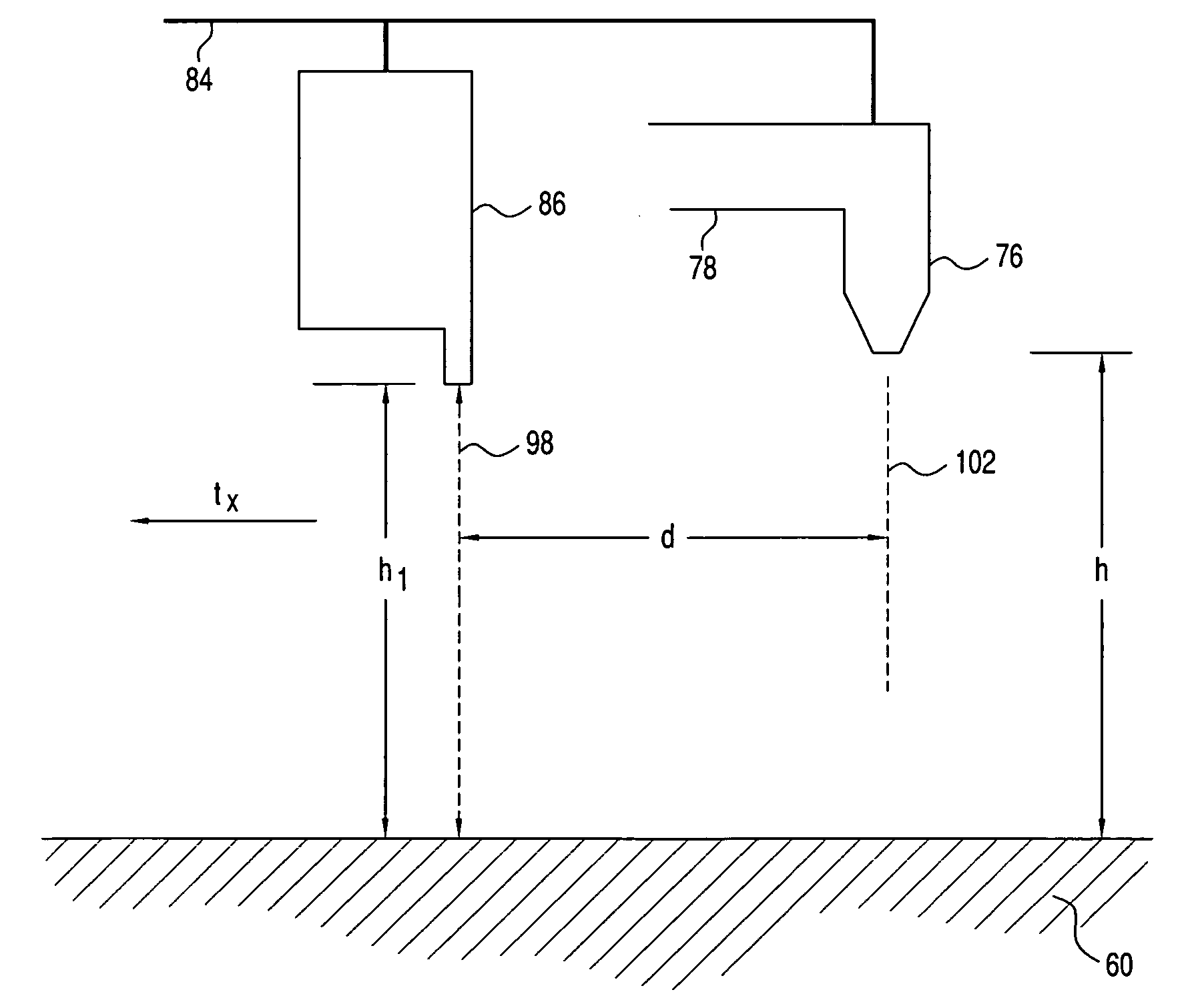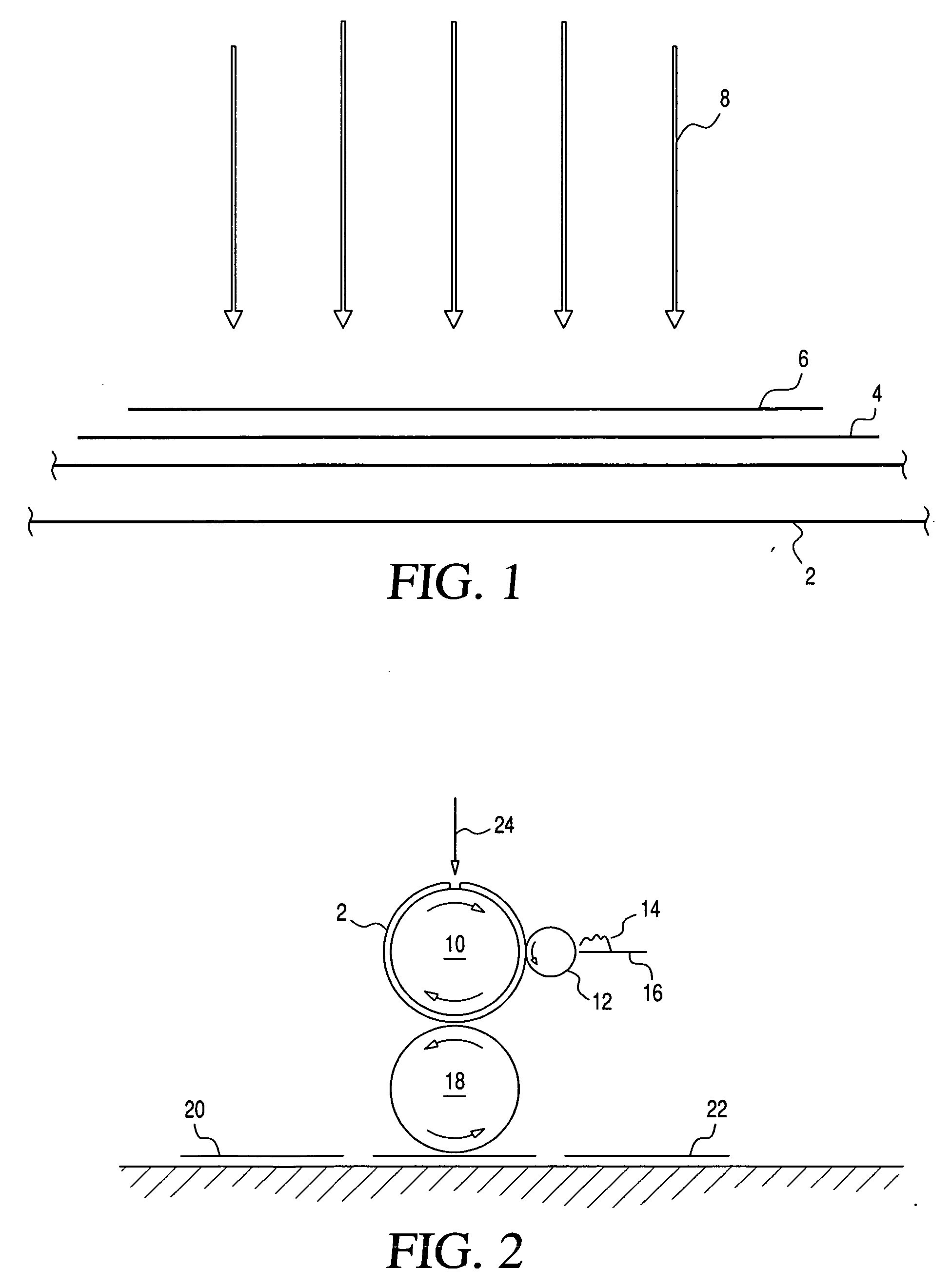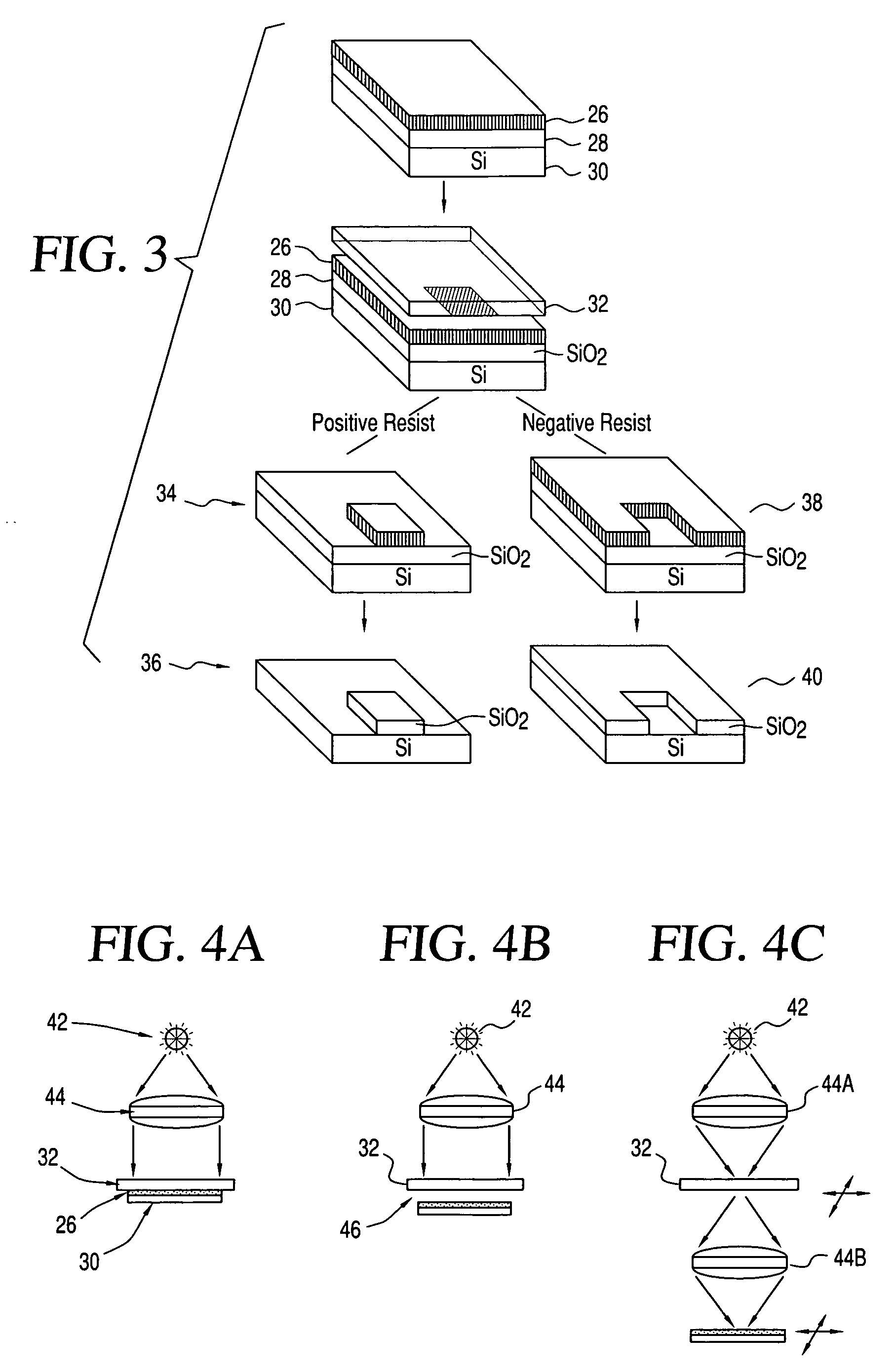Printable electronic features on non-uniform substrate and processes for making same
a technology of electronic features and substrates, applied in the field of direct printing, can solve the problems of high cost of machinery, high cost of set-up and maintenance, and labor of skilled laborers
- Summary
- Abstract
- Description
- Claims
- Application Information
AI Technical Summary
Benefits of technology
Problems solved by technology
Method used
Image
Examples
Embodiment Construction
[0110] The various features of the preferred embodiment(s) will now be described with reference to the drawing figures, in which like parts are identified with the same reference characters. The following description of the presently contemplated best mode of practicing the invention is not to be taken in a limiting sense, but is provided merely for the purpose of describing the general principles of the invention.
[0111]FIG. 13 illustrates a partial side view of a direct printing system 100 expelling a drop of ink (ink drop) 74 according to an embodiment of the present invention. In the direct print system 100 shown in FIG. 13, a nozzle 76 is expelling an ink drop 74 at a height h above a substrate 60. The direct printing system 100 can determine the velocity of each ink drop 74 as it is expelled from the nozzle 76. The velocity of the drop of expelled ink 74 is denoted as VD. In addition, as is well known to those of ordinary skill in the art, the nozzle 76 moves with the print he...
PUM
 Login to View More
Login to View More Abstract
Description
Claims
Application Information
 Login to View More
Login to View More - R&D
- Intellectual Property
- Life Sciences
- Materials
- Tech Scout
- Unparalleled Data Quality
- Higher Quality Content
- 60% Fewer Hallucinations
Browse by: Latest US Patents, China's latest patents, Technical Efficacy Thesaurus, Application Domain, Technology Topic, Popular Technical Reports.
© 2025 PatSnap. All rights reserved.Legal|Privacy policy|Modern Slavery Act Transparency Statement|Sitemap|About US| Contact US: help@patsnap.com



